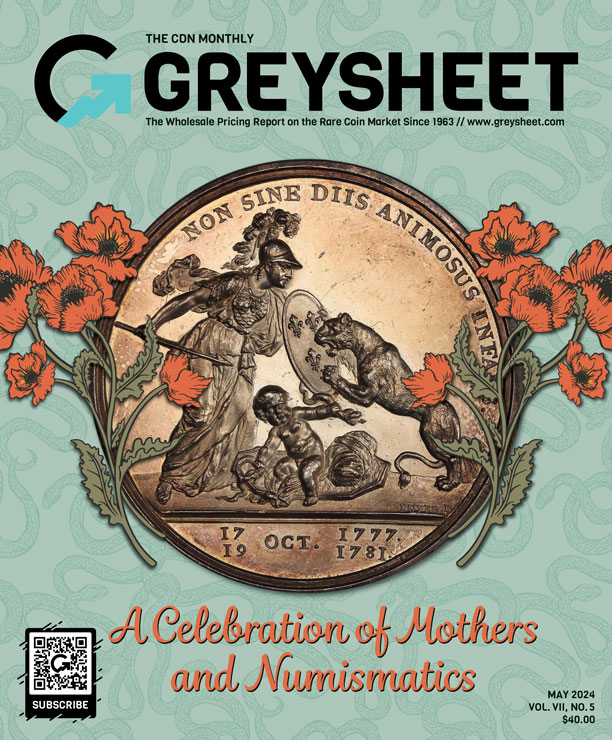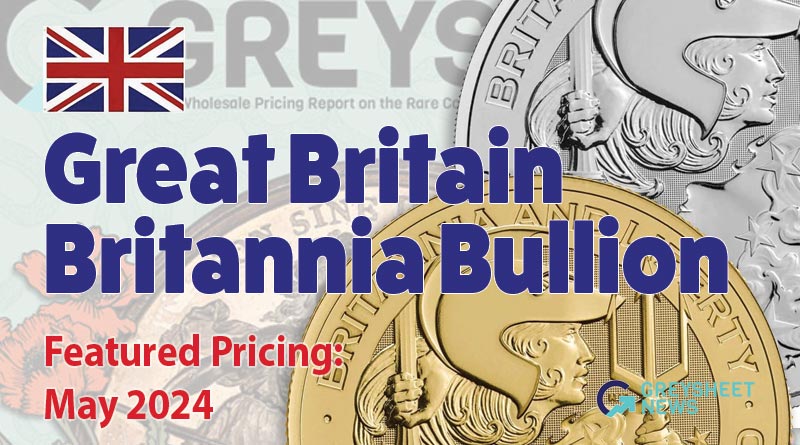Bluesheet: STANDING LIBERTY QUARTERS: A Complicated Series Featuring Tighter Spreads Than Their Contemporaries
One of the most frequent messages we get as editors of CDN is “why does the Greysheet list my coin at $3,000 but I can only sell it for $2,000?” The overwhelming majority of the time our reply is “the Bluesheet lists that coin at $1,800, so $2,000 for an average coin sounds right.” In our bifurcated marketplace, the Greysheet value typically represents coins at highest end of the spectrum, while the Bluesheet (for items we cover here) prices the lowest noted, or sight-unseen, value we’ve seen coins trade for.
In past issues of the Bluesheet, we have reviewed the Blue/Grey spread for various series, including Morgan dollars, Peace dollars, Buffalo nickels and $20 Saints. This week, we examine the Standing Liberty quarters series. Now that we have expanded pricing of this series in the Monthly Supplement by adding the grades MS64FH and MS66FH the spreads picture for this series is much more clear.
Examining at the series as a whole, the first feature that stands out is that the spread between sight-seen and sight-unseen is not as wide with the above-mentioned series we’ve examined in the recent past. Secondly, and unsurprisingly, the mintmarked issues show a greater spread in comparison to their Philadelphia-struck brethren. The difference between the Type One and Type Two coinage is interesting as well. The Blue/Grey spread is rather narrow for Type One coins, as these tend to come much better struck-the 1916 notwithstanding-than many of the Type Two issues. As a result there is less grading variance. In contrast, many Type Two dates were softly struck and therefore are more difficult to grade consistently and a wider range of quality exists on the market.
One would think that the spread for Full Head coins would be very wide, but that is not the case either. A few of the dates which show big spreads are the 1919-S, 1920-D, and 1927-S. The 1919-S jumps more than 50% in MS64 and MS65, as this date is one of the scarcest in the series in mint state and specialists are picky when bidding on this coin.
In conclusion, the Standing Liberty quarter series is one that can be reliably bought sight-unseen with less risk in comparison to other series because of the closer Blue/Grey spreads.
UNIQUE CONSIDERATIONS FOR THIS SERIES
When assembling a high grade set of certified Standing Liberty quarters, collectors often decide first whether to reach for full head examples, or not. While this is a matter of personal preference, most of the top collections are formed with full head examples where financially prudent, but it is not necessary that every coin carry the FH designation. The 1927-S, for example, is a key date in all grades, and fully-struck examples are prohibitively rare and expensive. One needs no apology for acquiring a lovely gem without the designation. The same can be said for the 1918/7-S overdate, 1919-D & 1919-S and others. It is often possible to find “well struck” examples with partial heads on many of these issues at a small premium over non-FH, however, don’t pay a big premium without the designation.
Next week we will begin to update prices based on the results of the Long Beach auctions.

Download the Greysheet app for access to pricing, news, events and your subscriptions.
Subscribe Now.

Subscribe to Monthly Greysheet for the industry's most respected pricing and to read more articles just like this.
Source: CDN Publishing










